
|
You entered: asteroid
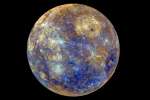 Colors of Mercury
Colors of Mercury
1.03.2013
The colors of the solar system's innermost planet are enhanced in this tantalizing view, based on global image data from the Mercury-orbiting MESSENGER spacecraft. Human eyes would not discern the clear color differences but they are real none the less, indicating distinct chemical, mineralogical, and physical regions across the cratered surface.
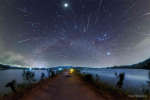 APOD: 2023 December 17 Б Geminids over Chinas Nianhu Lake
APOD: 2023 December 17 Б Geminids over Chinas Nianhu Lake
16.12.2023
Where are all of these meteors coming from? In terms of direction on the sky, the pointed answer is the constellation of Gemini. That is why the major meteor shower in December is known as the Geminids -- because shower meteors all appear to come from a radiant toward Gemini.
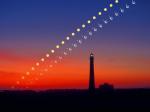 Solar System Rising Over Fire Island
Solar System Rising Over Fire Island
3.05.2005
If you wait long enough, the entire Solar System will rise before you. To see such a sight, however, you will need to look in the direction of the ecliptic. All of the planets and their moons orbit the Sun in nearly the same plane, the ecliptic plane.
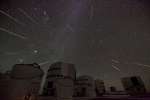 When Gemini Sends Stars to Paranal
When Gemini Sends Stars to Paranal
15.12.2012
From a radiant point in the constellation of the Twins, the annual Geminid meteor shower rained down on planet Earth this week. Recorded near the shower's peak in the early hours of December...
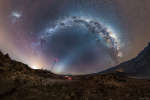 Milky Way and Zodiacal Light over Chile
Milky Way and Zodiacal Light over Chile
8.03.2020
What is the band of light connecting the ground to the Milky Way? Zodiacal light -- a stream of dust that orbits the Sun in the inner Solar System. It is most easily seen just before sunrise, where it has been called a false dawn, or just after sunset.
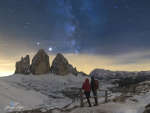 Saturn and Jupiter over Italian Peaks
Saturn and Jupiter over Italian Peaks
19.10.2020
Saturn and Jupiter are getting closer. Every night that you go out and check for the next two months, these two bright planets will be even closer together on the sky. Finally, in mid-December...
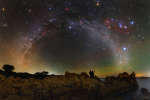 A Night Sky Vista from Sardinia
A Night Sky Vista from Sardinia
20.10.2020
How many famous sky objects can you find in this image? The featured dark sky composite combines over 60 exposures spanning over 220 degrees to create a veritable menagerie of night sky wonders. Visible...
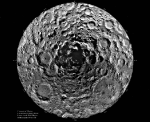 Ice at the Lunar South Pole
Ice at the Lunar South Pole
3.12.1996
Ice on the Moon? The prospecting Clementine spacecraft may well have discovered it. In 1994, Clementine spent 70 days in lunar orbit mapping the Moon's surface. Shown above is a dramatically detailed composite view centered on the Lunar South Pole - constructed from 1500 Clementine images.
 Miass River Sunrise
Miass River Sunrise
2.03.2013
Each day on planet Earth can have a serene beginning at sunrise as the sky gently grows bright over a golden eastern horizon. This sunrise panorama seems to show such a moment on the winter morning of February 15.
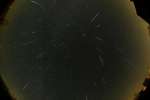 Geminids in 2007
Geminids in 2007
2.01.2008
Dust from curious near-Earth asteroid 3200 Phaethon seems to fall from the constellation Gemini in this fisheye skyview. The composite image was recorded over four December nights (12-15) just last year from Ludanyhalaszi, Hungary. Of course, the streaks are meteor trails from the annual Geminids meteor shower.
|
January February March April May June July |
|||||||||||||||||||||||||||||||||||||||||||||||||